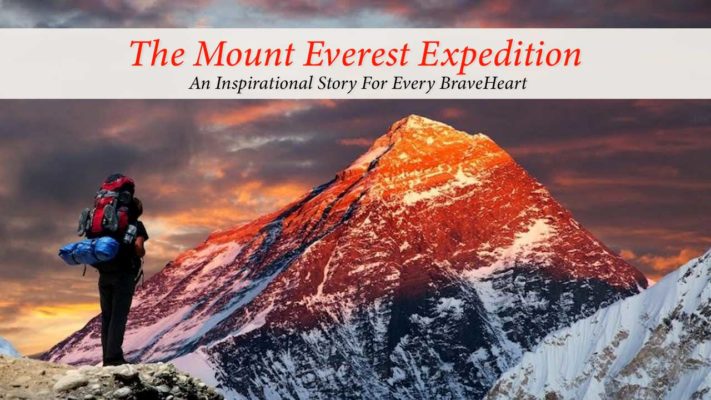
Journey To The Summit: Tale Of Bravery And Human Spirit
Walking and camping for 30 days in sub-zero temperatures, battling bone-chilling cold swirling winds and navigating challenging terrains to reach a height of 8,200 meters. And just in another day, in the striking distance was the mighty Everest Summit at 8,848-metre. This is where Asha Kiran Rani (21 years), Anmish Varma (25 years) and 4 of their team-mates found themselves on 15th May this year. All of them were on their maiden attempt to scale one of the 7 natural wonders of the World- the Mount Everest.
Hailing from below-poverty-line families, Kiran and Varma were 2 of the 6 selected by the AP Department of Youth Services, from 180 aspirants, to participate in the Everest expedition. The department’s mission is to encourage the youth from poor backgrounds to take up adventure activities and develop adventure sports in India.
Asha Kiran was the only girl to be selected for this expedition, funded entirely by the Government of Andhra Pradesh. Asha summited the great mountain, while Varma could only reach up to Camp 2. In Varma’s case, it ended up being a case of ‘so near, yet so far’ when he chose to return with a critically ill team-mate of his. He has no regrets though. He says, “I will try again next year. I’m happy I helped my fellow mate.”
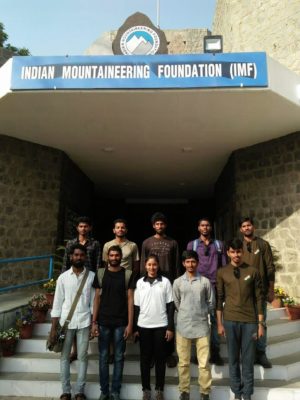
Asha’s delight, however, has no bounds, especially because even she could have narrowly missed Summiting. Asha recounts, “Due to heavy rush at the steps, it was getting late. My instructors wanted me to come back, but I requested them to let me go on. Luckily, they agreed.” She exclaims with unbridled happiness, “I was speechless when I reached up there. I had tears in my eyes. It was a mix of emotions- happiness, relief, exhaustion.” It is almost as if she is re-living that moment as she recounts it. “I can never forget that day”, she says.
The main takeaway from this adventure they both simultaneously claim is ‘living in simplicity’. Anmish declares and Asha Kiran concurs, “We survived in the most difficult of conditions only because of our prior training, will-power and discipline.”
Trek Route From Everest Base Camp To The Summit
They left for Kathmandu on April 10th and reached the Base Camp on the Northern Ridgeside in Nepal from Lhasa via the newly laid asphalt road on the Tibetan plateau. Following is a glimpse into their journey.
Base Camp (5,180 m)-April 19th
This is just below the Rongbuk Glacier. The temperature was around -10ᵒC. Initially, they camped here for 5 days, acclimatizing themselves. They alternated between hiking in the mountains and resting and eating, to build up energy for the trek ahead. Anmish states, “Our trekking company was really good and they served us good quality Indian food, rich in protein. We woke up by 7:30 am daily and went on our hikes. The Base Camp had all amenities. We would relax in the evenings by watching movies or playing board games.”
Interim Camp (6,100 m)-April 24th
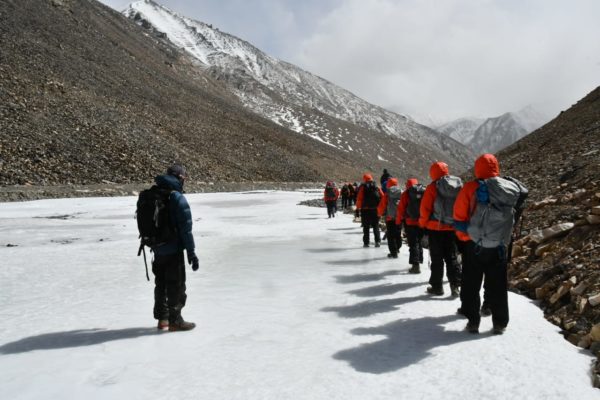
This Camp is located at the base of Changtse Mountain and the team spent a night there. It was a walk of 12 km and took them about 3 ½ hours walking on the East Rongbuk Glacier. Yaks had been provided to carry all the gear, food and clothes, while the climbers were carrying their backpacks with clothes needed for an emergency. The temperature here would hover around -12ᵒC at nights.
Advance Base Camp (6,500 m)-April 25th
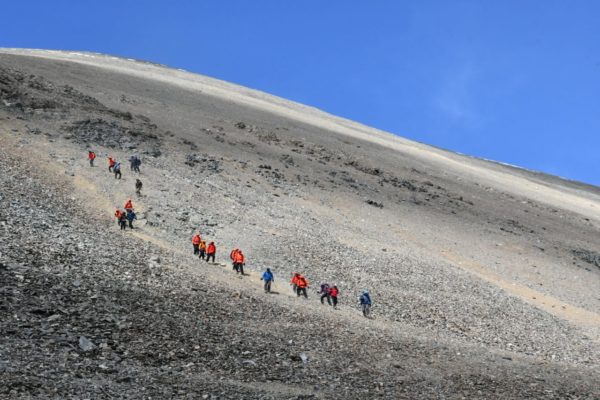
This is situated below the North Col and the team reached there after 13 km of hiking on boulders, ice and snow. The route is along the Rongbuk Glacier, also called “miracle highway”, named after the first explorers, because there is an easy natural strip of stones splitting the glacier into two parts. This is the primary high camp during the expedition. They spent 4 days here in -20ᵒC temperatures. Up till this point, the camps are permanent and manned by regular staff during the expedition season. From here, though the camps are set-up, the amenities are limited.
“We went on hikes during the day to try our crampons and get acclimatized. And the evenings, we spent huddled in our tents playing cards or sharing our experiences”, explains Anmish.
The team went up to North Col (the next camp) on April 29th for a night and came back to Advance Base Camp and spent another night there to recuperate.
It was so cold that they had to wear at least 2 layers of clothes under their heavy jackets. There was a danger of suffering from frostbite, so even at nights, they covered their eyes with goggles.
“Then we trekked back to the Base Camp and stayed there for 10 nights” informs Asha Rani. Anmish adds, “We went on hikes daily, ate food and rested and waited for the weather to clear up so we could go to the Summit.”
Once the Summit date was fixed, the team left the Basecamp and came up to this camp again on May 11th and stayed for a couple of nights.
Camp 1/North Col (7,010 m)-May 13th
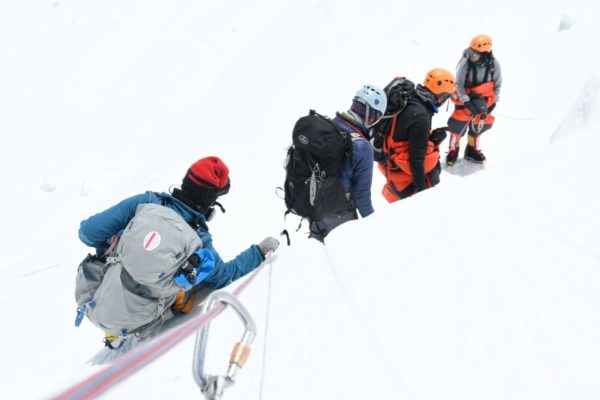
Ropes are permanently fixed from here right up till the Summit. It took them 7 hours to reach the North Col camp. Yaks only come up till the Advance Base Camp, so now the team had the added challenge of carrying their own gear from this point onwards. The North Col camp is a very steep climb, almost vertical from Advance Base Camp with a steady gain in altitude. To reach here, they crossed the East Rongbuk Glacier and put on their crampons as their normal trekking shoes did not have the grip to walk on so much snow. After a short walk, they clipped their ascenders into the fixed rope.
Anmish recounts, “We stayed at this camp for 1 night. The food supply here is limited. Our food was mostly instant noodles, soup, tea, juices- mostly fluids since they are easy to have.” Asha Rani remembers, “The tents would sometimes blow away in the fierce wind. The temperature was around -25ᵒC and we slept with oxygen masks on. We melted snow to drink, ate as much as we could and rested ourselves.”
Camp 2 (7,775 m)-May 14th
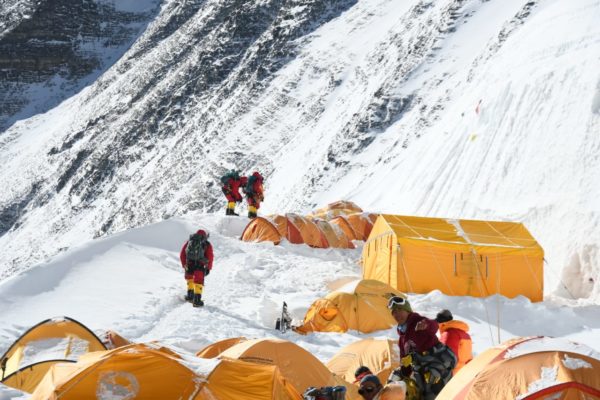
Camp 2 marks the start of the ‘High Camps’. The route is usually pure snow but can also be rock and this section is known for high winds. It is a 5 hours walk to this stage. The wind, however, was getting stronger as the team climbed up. They used oxygen cylinders while making this climb. During the climb, the regulator on Asha Rani’s O2 tank suddenly stopped working and she spent a few anxious minutes as a Sherpa swapped his regulator for hers. (The Sherpa returned to the base camp.)
Since this camp is at high altitude and at an incline, the tents were spread out. The team stayed at this camp for one night, still acclimatizing to the rarefied atmosphere. They had to sleep with all their clothes on. There was a high wind speed and the cold was intense. The temp was between -25ᵒC to -30ᵒC.
“It was quite scary,” recalls Asha Rani, a shudder passing through her as she remembers the cold, “The wind would howl outside. Even after wearing gloves, our hands were freezing. The sherpas would get our food to our tents. The crampons were all frozen after we unbuckled them from our shoes. Though scary, the excitement of Summiting the next day kept our hopes up.”
Unfortunately, Varma returned back from here.
Camp 3 (8,230m)-May 15th
The rest of the team moved on and it took them 4 hours to reach Camp 3. It was about 2 pm (local time) when they got here. They were on supplemental oxygen. The climb was extremely windy and the tents were on small rock ledges. The wind was strong at 80 km/h, and the temperature was -25ᵒC /-30ᵒC.
“We spent a restless afternoon trying to rest, drink and eating snacks waiting in anticipation for our climb. At 7:30 pm we had all our clothes on and not an inch of our skin was exposed to the wind. We wore goggles even though it was dark to protect the eyes from the frostbite. And we were ready to go.” says Asha Rani. (In fact, Asha Rani suffered from snow-blindness later as she had removed her glasses for some time during the climb.)
Summit (8,848m)-May 16th
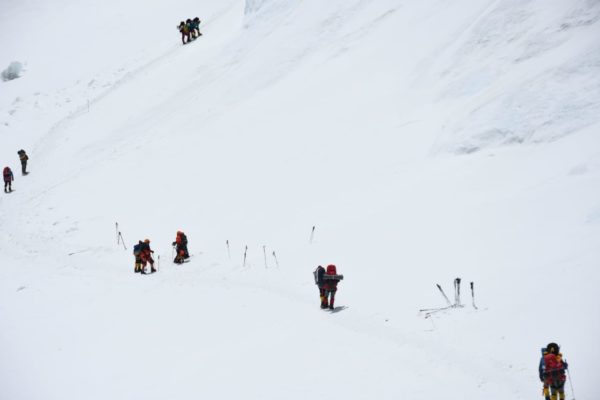
The Northeast Ridge represents the most difficult climb on this route and leads to the Summit. There are three ‘steps’ or rock climbs along the way. All the three steps are steep and challenging. With the 15 kg backpack, the oxygen mask, the goggles and the hood, Asha Rani was finding it difficult to even see her own feet.
The 1st Step, the first of three rock features, is difficult at this altitude. Mushroom rock is a feature on the Ridge. The route is full of loose rock, adding to the difficulty with crampons. From the 2nd step, the Chinese Ladder starts. These ladders were first placed by the Chinese expeditions in 1960 and are permanently installed now. This section has a 10,000 feet vertical drop. The 3rd Step, though straightforward rock climbing, is challenging at this altitude. Next is a steep snow slope, very windy and extremely cold before the final ridge climb to the Summit. It is narrow, with 10,000 feet drop-offs on both sides leading directly to the Everest Summit.
Since the steps are very narrow, only one-way traffic is allowed. Due to the heavy rush of tourists returning from the Summit, Asha Rani, even though she left at 7:30 pm (local time) from Camp 3, was stuck at the start of the 1st step till 6 am (local time). This is when she was advised to abort her Summit attempt, but she was able to convince her instructor to let her go. As soon as the traffic resumed, she climbed non-stop with the help of her Sherpa and ate chocolate bars to give her energy to carry on.
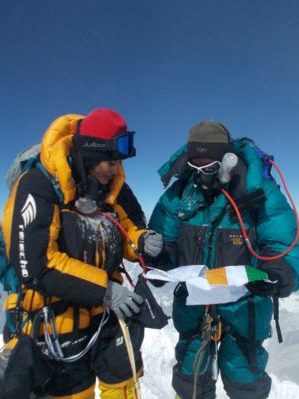
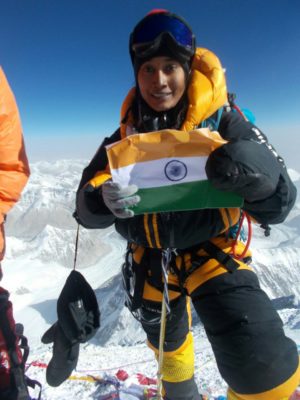
Asha Rani Summited at 9:50 am (local time). It was a culmination of extremely hard work, grit and determination. She stood at the literal top of the world, a conqueror in her own right.
She spent about 30 minutes at the Summit before it was time for her to return. By now, she had been exposed for over 14 hours in the snow, in extremely trying conditions. Since the rest of her team-mates left early, they went right down to the Base Camp. Asha Rani reached Advanced Base Camp by early evening and spent the night here.
Advance Base Camp (6,500 m)-May 17th
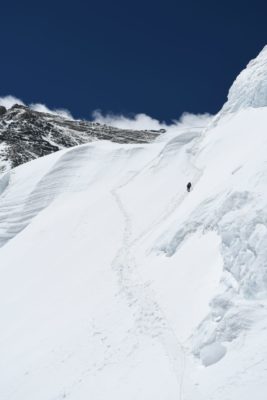
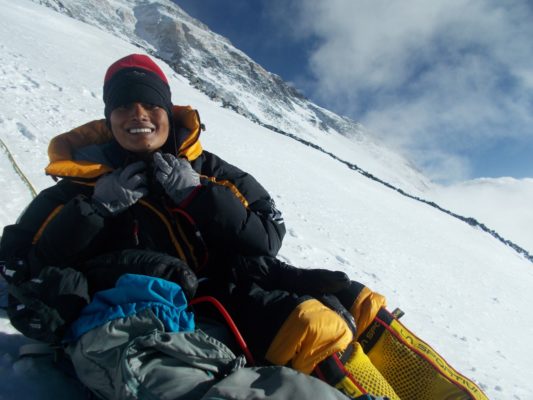
It was time to go down. No problem on the way down until the second step but after that, as it was a 90ᵒ incline, it was very difficult on the ladders. Asha Rani had to remove her goggles many times to see the rungs more clearly. She rappelled down most of the route after that and reached the Advance Base Camp.
“As I sit huddled and exhausted in the tent, it slowly begins to sink in that I actually climbed the mighty Mount Everest” reveals Asha Rani, the awe still ringing in her tone. “As most of my team had already gone further down, I just sat on my own, letting the incredible feeling sink in. Though alone, I enjoyed this last night at this camp knowing that it’s now over.”
Base Camp (5,180 m)-May 18th
Luckily, as yaks are available from this point, Asha Rani was able to pack all her gear to be carried down by them. She finally left the camp and walked this path for the last time. In her words, “As I reach the base camp, I realize it is the end of the walk and the climb of Everest.” They spent a week at the camp, before travelling back to Kathmandu and their homes.
About Asha Kiran Rani
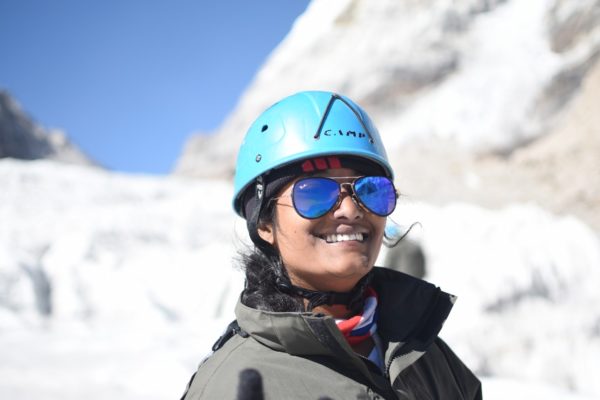
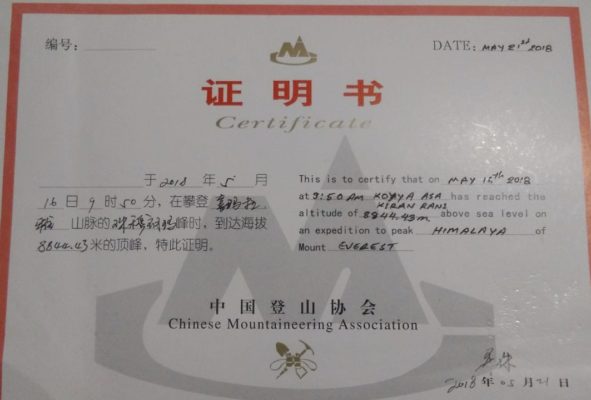
- Asha Kiran Rani hails from a Uyyalapeta village in Srikakulam district.
- She is a Bachelor in Physiotherapy and is currently doing an internship at different hospitals in Visakhapatnam.
About Anmish Varma
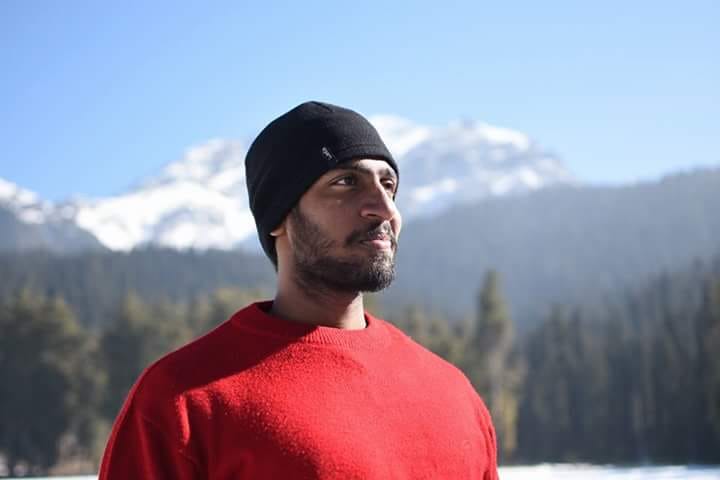
- Anmish Varma hails from Visakhapatnam.
- He is an international kick-boxer and a Karate champion and represents India as the Captain of World Kickboxing and Karate Union. He has been winning medals every year since 2014 and is gearing to take part in the tournament at Greece this year.
- He runs an NGO, Kalpavruksh, which promotes social activities, like education, cleanliness, abolishing child labour, etc.
Training For The Summit
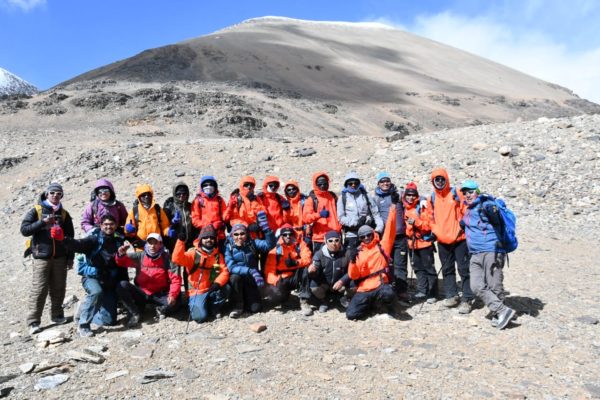
- They trained for more than 6 months to be fit for the expedition.
- They underwent a mountaineering course of 25 days from the Himalayan Mountaineering Institute, Darjeeling.
- And followed it up with an advance mountaineering course from the Jawahar Institute of Mountaineering and Winter Sports, Jammu and Kashmir.
- They also underwent extensive training in ice climbing, trekking and height training in Ladakh.














